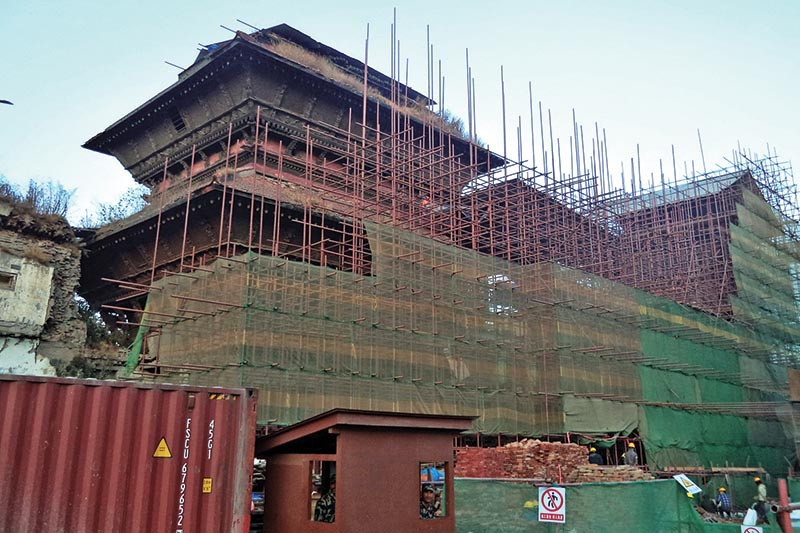More than 55pc heritage sites await reconstruction
Kathmandu, April 24
Even after five years of the 2015 earthquakes, more than 50 per cent of heritage sites and buildings that were destroyed or suffered damage await reconstruction across 32 quake-hit districts in the country.
Of the 920 heritage monuments which the Department of Archaeology has identified for reconstruction or renovation, only 402 (44 per cent) have been reconstructed. The authorities, nearly a year after the devastating earthquakes, had said that 753 temples and monuments had suffered damages in 17 districts. With many other remote heritage sites also being included for reconstruction recently, the number of dilapidated monuments has reached 920 in 32 districts.
Reconstruction of heritage monuments is being undertaken under the supervision of the DoA with financial support from the National Reconstruction Authority. However, of the 402 reconstructed monuments, a large number of larger temples and heritage buildings that were completely destroyed by the earthquakes have been reconstructed by the financial or even technical support of foreign nations and organisations.
The process to reconstruct temples, pati-pauwas (rest-houses), heritage buildings, satals and stone spouts at the seven world heritage sites in Kathmandu valley has been sluggish. Of the 170 ramshackle heritage buildings that suffered damages during the earthquakes, reconstruction of only 102 sites has been completed so far.
Famous temples such as Kasthamandap, nine-storey temple, Laxmi Narayan temple and Kumari Ghar at Basantapur Durbar Square still await reconstruction. Only two world heritage sites in Kathmandu valley — Bouddhanath and Swoyambhunath — have seen completion of all heritage monuments. Twenty-five heritage monuments have been reconstructed in Pashupati area alone, one of the world heritage sites.
The NRA issuing a press release today said reconstruction of heritage sites needed meticulous research and adequate details to boost the pace of reconstruction. “Taking into account the cultural values and religious importance of such monuments, we need to produce skilled manpower, use all kinds of heritage-friendly construction materials and garner the support of locals while reconstructing such sites,” stated the release.
Damodar Gautam, director general of DoA, said, “We had begun reconstruction work in the third year after the earthquakes as soon as the government provided us funds. The reconstruction output has been bad. Moreover, heritage reconstruction is painstakingly difficult.”
Gautam said lack of skilled manpower for reconstruction and people’s ignorance regarding the detailed knowledge of temples and heritage buildings were some of the obstacles facing reconstruction. Lack of construction materials as per the principle of heritage reconstruction, including historic bricks, woods and mud were some factors causing delay in reconstruction work.
Disputes among local residents and the local bodies regarding reconstruction modality of historic sites and temples such as Ranipokhari and Kasthamandap have also delayed the reconstruction process.
Some of the international organisations, such as UNESCO and JICA, were made to withdraw from reconstruction of temples following locals’ protest demanding that they build temples on their own.
The government had spent Rs 2.94 billion last year when 402 heritage monuments were reconstructed. In 2018, reconstruction of 108 monuments was completed. The NRA has sought Rs 9.5 billion to rebuild all the heritage sites in the country.
A version of this article appears in e-paper on April 25, 2020, of The Himalayan Times.






